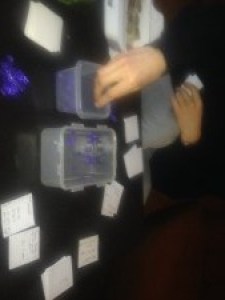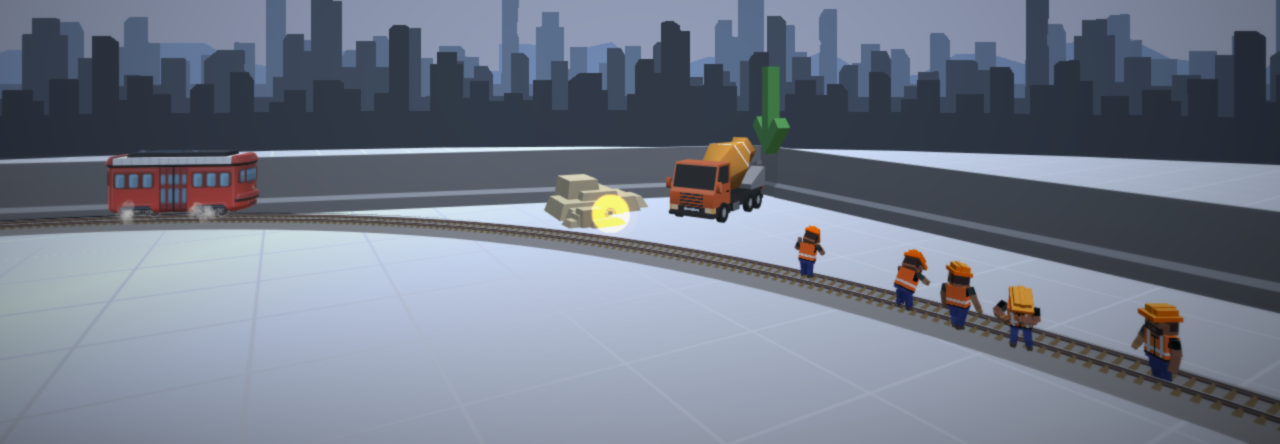I’ve been following real room escape games since 2012 and because of my previous post on designing escape games I frequently get asked for help on designing these games. So I decided to answer some of the most frequent issues that people inquire about from general tips, to trends, to how much to charge.
If you want tips on how to play escape games I suggest checking out the Room Escape Artist.
There are more than 2,800 escape games on the planet with more opening every month. This number comes from the Room Escape Directory. The growth in Toronto alone has been amazing to witness with 0 in 2012 and now there are 56 escape games in 2015 plus an additional 40ish in the surrounding suburbs. This pales in comparison to Beijing which has 182.

Created by Esc Room Addict
Tips on designing an escape game
These tips are often overlooked when it comes to designing escape games so I thought I’d share them. There are tons of discussions and tips elsewhere on how to make puzzles for escape games so instead I’m focusing on other aspects of what makes an escape game a good experience.
Stay on theme (narrative)
The themed experience of your game can matter more than the puzzle design.
Anything can be a theme for your escape game, there are games about World War One and even mardi gras.
It’s really important to have a solid narrative experience for your game. It doesn’t matter if you puzzles are amazing if your theme is lame or your game doesn’t respect the theme you’re using. The key is to match your theme to the whole experience!
Ideally once the player enters your building they start to get the feel of the theme and what to expect once they are in the room. At the very least, make the pregame room part of the themed experience. Obviously, everything in the escape room should be on theme.
By solving puzzles in the room more narrative should be revealed to the player. This means that as they advance through the game they will not only unearth more clues to the metapuzzle but will also get more into the game world you crafted. Players love getting little tidbits of narrative which supports the theme.
If people get really cool thematic items to play with they may overlook poor puzzle design – I’ve seen this on more than one occasion.
And if you do it wrong people get baffled. One game I tested was set in the distance past yet used UV lights without shame. There was no thematic (or narrative) justification for the UV lights to exist and this discrepancy bothered the entire team I was with. Be sure your props and puzzles match the time period your game is set in.
A neat theme can draw people to your game! I’m sure it’s only a matter of time until we see escape games with licensed content, they probably already exist. I just know I’d love to escape a room using the Force.
How long the game should last
The short answer is 45-60 minutes.
A 30 minute experience is too short (and thus not a good value for the player’s money) and anything beyond an hour starts to get taxing on the group. One game I tested ran for nearly two hours which is too long not only because of player’s attention span but also because of people’s biological needs.
The in-room experience is what should be 45-60 minutes. In total the time from when the player enters the building to leaving can take 60 to 120 minutes. Remember that there is the pregame orientation and the post game wrap-up.
Let players win
This is a contentious point. Some designers think that the room escape game should be hard (nigh impossible) to win and that a truly ‘good’ experience will take more than one visit.
I disagree.
One aspect of game design that escape rooms can easily use is providing a sense of progress and success. You should have two to three points in which players can feel they made a huge step in getting closer to escape. Often this is done by opening up a ‘secret room’ to the players.
You want to keep you players in an optimistic mood.
People should be able to escape the room in the time allotted but not every team needs to be successful. I suggest a success rate of about 60-70%.

From a Montreal Escape Game
Make the ending rewarding!
No matter how the players escape be sure to make the ending rewarding.
Even if the players lose make sure that the conclusion is also an interesting experience. Answer the question: what happens if the players don’t escape?
A game that has really good win and failure endings is done by LockQuest.
When the game is done you can bring the players back into the pregame room and debrief on the experience. Players tend to love to talk about the experience they just had and examine where they worked well or where they failed. It’s also a great chance to get a photo of the group for your social media platform of choice.
Group size
A key element to having a positive escape experience is doing with the right number of people. With too many people it can get boring and confusing while with too few people the puzzles will be too hard and numerous.
Achieving balance in group size is fundamental for any escape game.
According to research done by Scott Nicholson the average group size in room escape games is 4.58 people. I agree that four and a half people is ideal. Where do you find half a person?

In Prague I played a game that was designed for 2-4 people which was rather fun. There were two of us and we escaped on time. With four people there might not have been enough for every participant to do so be sure to design for the extremes of your group size.
If people are standing around with nothing to do then you should lower the group size.
Games I’ve played with 10+ people have all boiled down to communication issues. As in, as long as those ten people can effectively communicate with one another they’ll get out. To me the problem is that designers are banking on the fact that people won’t communicate and that’s lazy design.
The pregame room
The environment the player first sees sets the tone for the rest of their experience. Ideally the exterior of the building all the way to the pregame room is themed. The best pregame rooms get the player excited for the narrative they are about to go through while giving really subtle hints.
What is the pregame room? It’s basically the waiting room. This is where the game is introduced to the players and the rules get explained and often the theme is introduced.
Some pregame rooms make use of videos and others don’t. The benefit of having a video is that every group will get the same introduction – plus you can use special effects! One problem with video is you change your game after filming you’re stuck with the video or the expense of a reshoot.
Everything breaks

I do mean everything. Make sure you have a duplicate of every prop that goes into your game (even better if you have triplicates). As a result you may want to forgo extremely unique set pieces and settle for something that is easy to replicate or cheap to replace.
If you use anything which requires a computer or other electronic tools bug test them on their own. If you have buttons in your game test them after every game – one game I played we had to use a hint because the sensors weren’t registering a connection.
Of course, red herring props are less of a concern but you’ll still want backups to replace anything that breaks.
Play testing!
Because everything breaks you need to play test your game. Every game should be play tested but escape games need a lot more testing than you think. People will try tearing paintings of walls and may even attempt to punch through a drawer. Don’t underestimate the determination of people to leave a room.
Play testing will help you address all of the design issues raised above and help you understand how to make your escape game even better!
What to charge
I get asked this question a lot. What you charge for your room escape game depends on many factors. In my experience there seems to be an average price point of ~$35 CAD per person.
As of mid-2015 I suggest charging the following per person:
$35 CAD
€30 EUR
$30 USD
What you charge will depend on the game you’re running.
You need to take into account the operating costs you have for your game. Ask yourself what will need to replace and how often? If you have actors then your cost per game will be a lot larger than games with only an overseer. Of course you should consider standard operating costs of running any business.
Trends in room escape games
Escape into a club or bar
When I was in Budapest I was thrilled to see that a ruin bar (and some clubs) have incorporated escape games into their buildings. The basic idea that as a group you can try your hands at escaping then reward yourselves by drinking (or drinking the pain away). This is a novel idea for birthday party and the like.
Take a look at Budapest’s escape games.
Corporate events and team building
Perhaps the most obvious evolution in escape games is targeting workplaces. People who are trapped in cubicles sometimes want to escape to team building exercises and “away days”. Why not have these people escape to your game?
By targeting corporate events you can utilize your space during the day (most escape games run in the evenings and weekends).
They want to build up their teams and where better than a place where working as a group is needed?
Franchising the experience
This isn’t new but it seems to be gaining in popularity. If you’re opening a room escape game in your city you may want to consider licensing or franchising an existing operation. The trailblazer on this front is Scrap.
Obviously, you can also consider franchising your room escape game.
Miscellaneous things to consider

Local laws and emergencies
In some places you might be breaking the law just by locking people in a room. Before you open your game be sure you abide by your local laws and be conscious that you’ll have to tell players where emergency escapes are.
Advertising
You can start by adding your game to the Room Escape Directory. From there you’ll want to list on travel websites and encourage every player to review your game online (plus whatever app is popular in your area).
Would you like to know more?
Buy my book Escape the Game to get even more information on how to make escape games.
I am available for paid consulting on your game and am happy to do so. Feel free to contact me.






You must be logged in to post a comment.